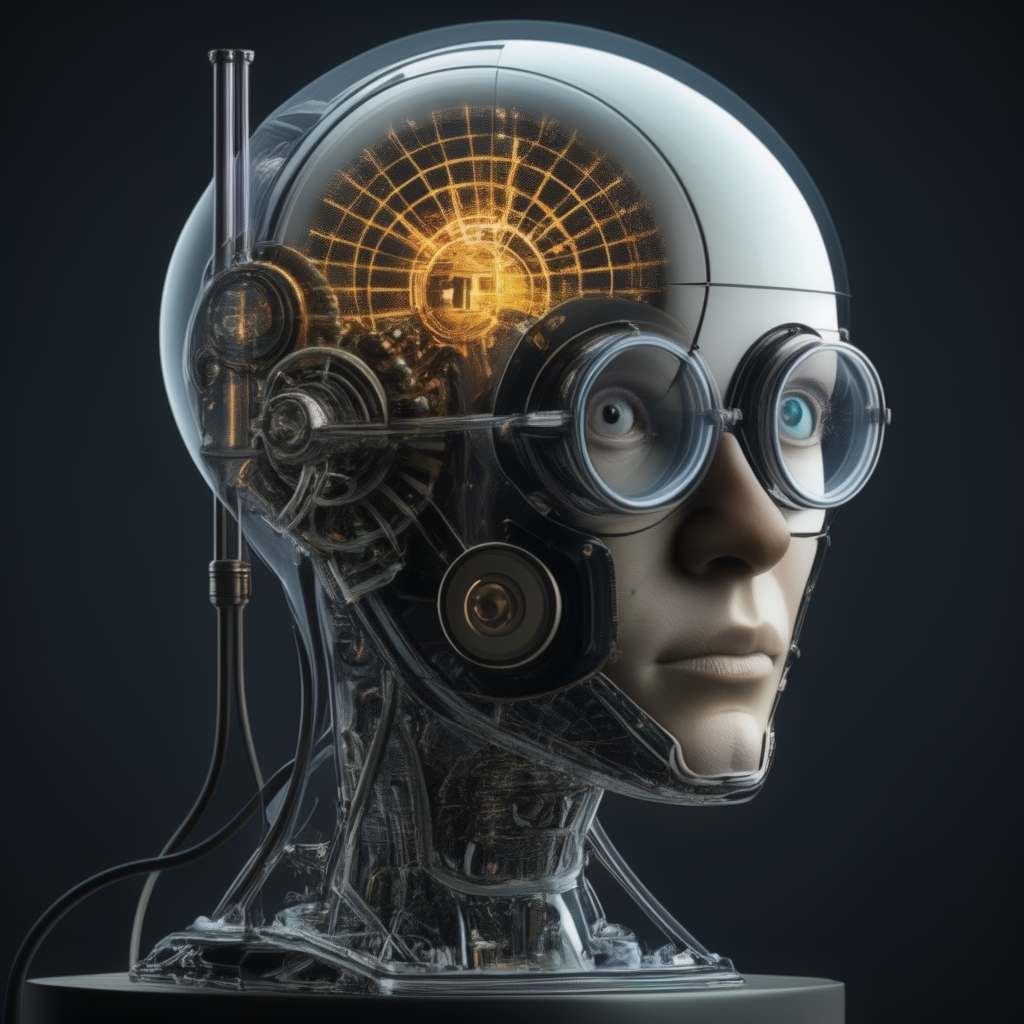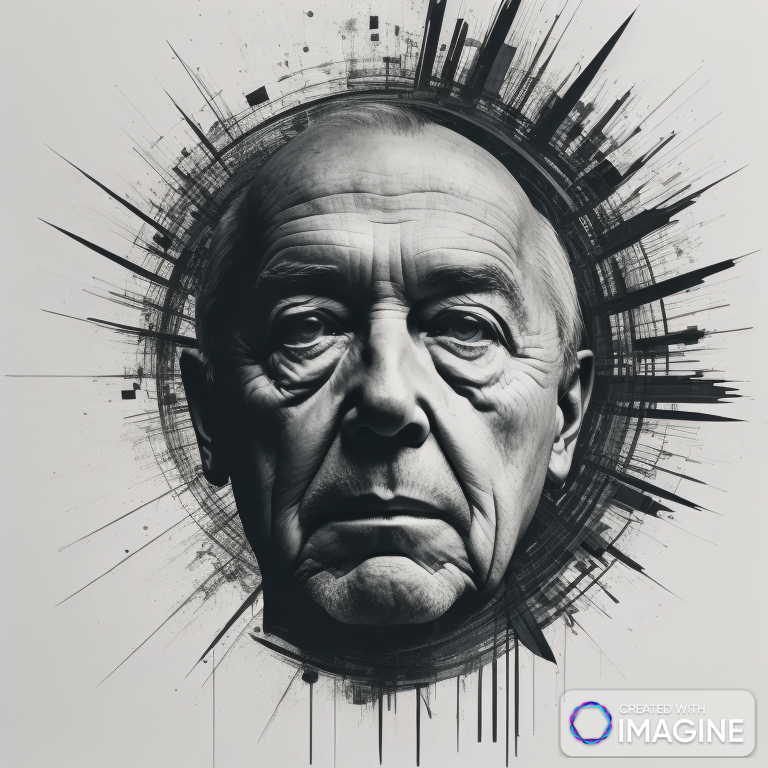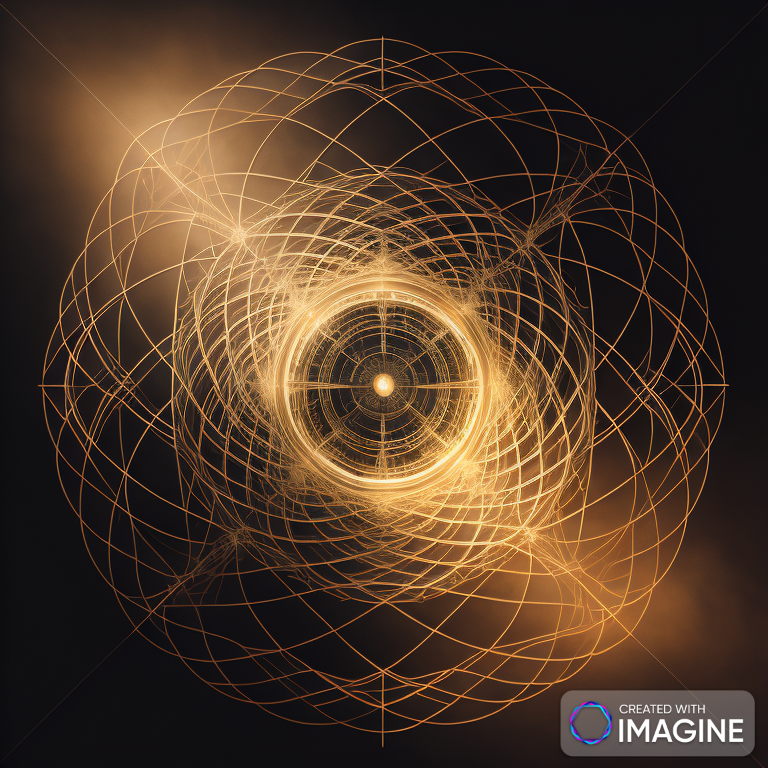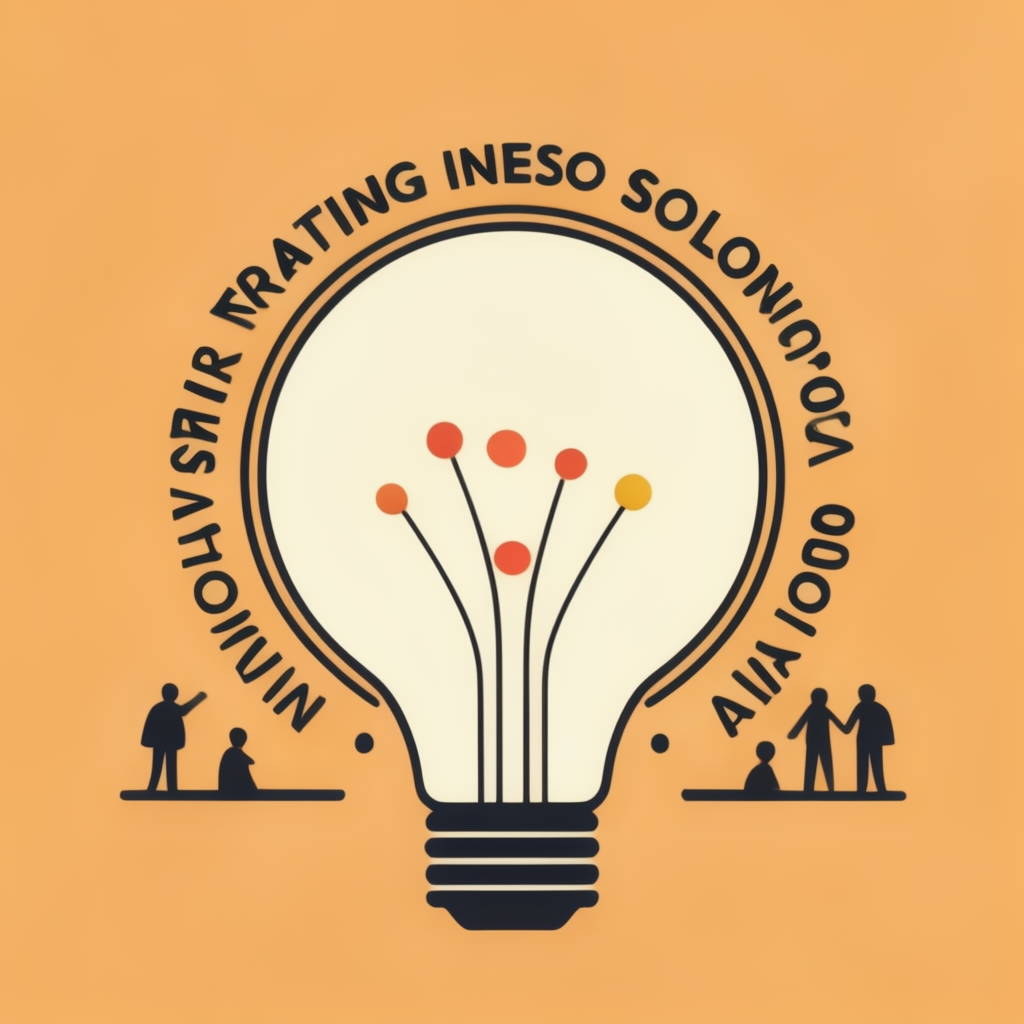The Concept of Invention: Discovery or Reinvention?
For centuries, human beings have marveled at inventions that transformed societies, whether the wheel, the printing press, the light bulb, or modern artificial intelligence (AI). We celebrate inventors like Thomas Edison, Nikola Tesla, Steve Jobs, and others for their groundbreaking contributions. But if we look closely, can we truly say these individuals “invented” something out of nothing, or did they simply unveil the inherent possibilities that already existed within the universe? The notion that nothing is entirely new, but rather a reinvention or discovery of what already exists, is deeply philosophical yet highly practical.
In this blog, we will explore the idea that everything in the universe is interconnected and pre-existing, and that invention is often the result of uncovering or enhancing what is already there. We will dive into key areas like natural principles, scientific discoveries, market innovations, and human creativity, illustrating how inventors and thinkers throughout history have built on pre-existing knowledge, materials, and concepts.
The Universe is a Blueprint: Invention as Discovery
The universe operates under a set of fundamental laws—laws of physics, chemistry, and biology—that govern everything from the smallest atoms to the largest galaxies. These natural laws existed long before humans arrived on the scene, and it is through the observation and understanding of these principles that we have been able to harness them for invention.
For example, consider electricity. Ancient civilizations were aware of static electricity, and as early as 600 BCE, the Greeks had observed that rubbing amber could attract lightweight objects. But it wasn’t until centuries later that scientists like Benjamin Franklin and Michael Faraday studied the deeper properties of electricity and magnetism, developing practical applications like the electric motor and generator. These inventors did not create electricity; they discovered how to control and apply it.
The same applies to gravity. Isaac Newton didn’t invent gravity—he formulated the laws describing how gravity works. The force had always existed, but Newton’s brilliance lay in his ability to describe and quantify it, leading to a revolution in physics. Today, scientists continue to build on Newton’s ideas, and even question them, as Einstein did with his theory of general relativity. This shows that even “new” scientific theories are built on previous foundations.
Innovation in the Marketplace: Better Versions of Existing Ideas
In the business world, the idea that inventions are not entirely original becomes even more apparent. Many successful products are simply improvements upon pre-existing ideas. Take Apple and the iPhone, for instance. Steve Jobs didn’t invent the mobile phone, nor did he create the first smartphone. However, Apple revolutionized the concept of the smartphone by integrating technologies such as touchscreens, app ecosystems, and sleek design in ways that hadn’t been fully explored before. The success of the iPhone came from perfecting and combining elements already available in the market.
In the case of automobiles, Henry Ford did not invent the car. Cars had existed for years before Ford came along. What Ford did invent was the assembly line for mass production, enabling cars to be affordable and accessible to millions of people. The car was no longer a luxury item; it became a necessity. Ford’s innovation lay not in creating a brand-new vehicle, but in optimizing the production process and making it available to the masses.
Similarly, modern tech innovations like artificial intelligence (AI) and machine learning are often portrayed as futuristic breakthroughs, but these technologies build on decades of research in mathematics, statistics, and computer science. The algorithms that power today’s AI systems, like neural networks, have existed in theory since the 1940s. What changed over time was computational power, data availability, and the refinement of existing models. AI wasn’t invented in 2020 or 2010—it evolved from ongoing research.
Creativity: Inspiration From the World Around Us
Even the most creative endeavors—art, literature, music—are often reinterpretations of existing ideas. Shakespeare, widely regarded as one of the greatest playwrights, often borrowed plots from earlier works of literature, history, and mythology. His genius lay in how he reworked these ideas, adding depth, emotion, and complexity to create something “new.“
In architecture, many designs are inspired by nature. The Eiffel Tower’s structure resembles the form of an iron lattice, while many of Gaudí’s buildings were inspired by the shapes of trees, plants, and bones. Architects and engineers study the efficiency and beauty of natural forms and incorporate them into human-made structures. This is not invention from nothing—it is borrowing from the universe’s blueprint.
Even scientific creativity is the art of connecting dots between known principles. For instance, Charles Darwin’s theory of evolution wasn’t conceived in a vacuum. He drew from his observations in nature, biological studies from other scientists, and even economic theories about survival and competition, such as those proposed by Thomas Malthus.
Invention as Reinvention: Cycles of Improvement
Inventions often follow a cycle of improvement where new generations of thinkers build on what came before. Consider the evolution of flight. Birds have been flying for millions of years, but humans could only dream of taking to the skies. Early attempts, such as Leonardo da Vinci’s ornithopter designs, drew inspiration from observing birds, yet failed due to a lack of understanding of aerodynamics.
It wasn’t until the late 19th and early 20th centuries that the Wright brothers were able to achieve controlled, powered flight. But even then, their invention wasn’t the final word in aviation. The development of jet engines, aerospace engineering, and the computerization of flight controls have continued to refine and improve upon the original concept of human flight. Each stage of aviation’s development is built upon previous discoveries, moving us closer to a better understanding and more sophisticated use of the same basic principles of lift, thrust, and control.
The Philosophical Perspective: Tapping into the Universe’s Potential
The idea that nothing is truly invented from scratch reflects a deeper, philosophical understanding of human existence. The universe holds endless possibilities, and invention is about tapping into those possibilities, discovering patterns, laws, and materials, and applying them in new ways.
Many spiritual and philosophical traditions, such as Taoism and Buddhism, suggest that the world operates in cycles and that knowledge comes not from creating something new, but from understanding and aligning with the natural flow of existence. This aligns with modern scientific views that we do not “create” the building blocks of the universe; rather, we learn to manipulate them. The atoms, molecules, and physical forces we use to create new technologies have existed since the dawn of the universe.
In many ways, invention is about uncovering what is already there, shaping it, and using it in innovative ways. The potential for invention lies in the fabric of the universe itself, waiting to be harnessed by those with the curiosity and vision to explore it.
The Stories of Inventors and Scientists Who Impacted Humanity
Throughout history, numerous inventors and scientists have left a lasting impact on the world, changing the way we live, work, communicate, and even think. The mindset and thought processes behind their breakthroughs are often marked by curiosity, perseverance, and a deep desire to understand the universe and improve the human condition. Let’s explore some key figures, their discoveries or inventions, their thought processes, and the positive and negative impacts of their work.
1. Thomas Edison: The Power of Perseverance and the Electric Light Bulb
Mindset and Thought Process
Thomas Edison, often regarded as one of the greatest inventors of all time, had a relentless work ethic and an experimental mindset. He is famous for saying, “Genius is 1% inspiration and 99% perspiration,” reflecting his belief in the power of persistence. Edison didn’t invent the light bulb entirely from scratch; instead, he improved upon existing designs by experimenting with thousands of materials until he found a filament that would last long enough for practical use.
Invention: The Practical Electric Light Bulb
Edison’s most famous invention is the practical incandescent light bulb. While light bulbs had been developed before him, they were either too expensive or didn’t last long enough to be practical. Edison’s version, created in 1879, used a carbon filament that extended the bulb’s lifespan and made it affordable for the general public.
Impact on Human Life
The invention of the light bulb transformed human life in countless ways. It extended the hours people could work, read, and engage in leisure activities, essentially reshaping modern society. Factories could now operate around the clock, which significantly impacted industrial productivity.
- Positives: Greater productivity, improved quality of life, and the foundation for modern electrical infrastructure.
- Negatives: Overuse of artificial lighting has been linked to negative health impacts such as disrupted circadian rhythms and increased energy consumption, leading to environmental concerns.
Applications
Edison’s light bulb was not just a standalone invention. It led to the development of entire industries, including electric utilities and appliances. It was the cornerstone of modern lighting and continues to be foundational in homes, businesses, and street lighting worldwide.
2. Marie Curie: The Discovery of Radioactivity
Mindset and Thought Process
Marie Curie’s approach to science was rooted in her intense curiosity and desire to push the boundaries of known science. Along with her husband Pierre Curie, Marie tirelessly worked on the study of radioactive elements, leading to groundbreaking discoveries. Despite financial hardships, she maintained an unwavering dedication to her research.
Discovery: Radioactivity and Radium
Marie Curie was the first woman to win a Nobel Prize, and she remains the only person to win Nobel Prizes in two different scientific fields—Physics and Chemistry. In 1898, the Curies discovered two new radioactive elements: polonium and radium. They coined the term “radioactivity” to describe the spontaneous emission of radiation by certain elements.
Impact on Human Life
Marie Curie’s work in radioactivity revolutionized medicine, particularly through the development of X-rays and cancer treatments like radiation therapy. Her discoveries also advanced our understanding of atomic physics, laying the groundwork for future research in nuclear energy.
- Positives: Advancements in medical diagnostics (X-rays), cancer treatment (radiation therapy), and a deeper understanding of atomic theory.
- Negatives: Radioactive materials pose serious health risks, as Curie herself suffered from radiation exposure. Additionally, her discoveries paved the way for nuclear weapons development.
Applications
Radioactivity has applications in medicine (radiotherapy), power generation (nuclear energy), and scientific research (carbon dating). Unfortunately, it has also been weaponized, leading to the creation of nuclear bombs.
3. Albert Einstein: The Theory of Relativity
Mindset and Thought Process
Albert Einstein’s genius lay in his ability to think differently and question the established laws of physics. He famously embraced “thought experiments” to visualize complex physical phenomena. His ability to challenge conventional wisdom led him to reshape our understanding of space, time, and gravity.
Discovery: The Theory of General and Special Relativity
Einstein’s most well-known contributions are the theories of special relativity (1905) and general relativity (1915). Special relativity introduced the famous equation E = mc², which describes the equivalence of energy and mass. General relativity, on the other hand, redefined gravity as the warping of spacetime around massive objects.
Impact on Human Life
Einstein’s theories revolutionized physics and helped lay the foundation for quantum mechanics, cosmology, and even modern technology. His work explained the mechanics of black holes, gravitational waves, and the expansion of the universe.
- Positives: Advancements in GPS technology, satellite communication, and deeper understanding of the universe’s origins.
- Negatives: The understanding of energy and mass equivalence contributed to the development of atomic bombs during World War II.
Applications
Einstein’s theories have practical applications in technologies like GPS, which relies on corrections for time dilation (a concept from special relativity). His work also contributes to astrophysics and our understanding of space exploration.
4. Alexander Fleming: The Discovery of Penicillin
Mindset and Thought Process
Alexander Fleming was a bacteriologist who understood the importance of observing the unexpected. In 1928, while conducting routine experiments, he noticed that a mold called Penicillium notatum had killed bacteria in a petri dish. Rather than dismissing it as contamination, he followed the lead, recognizing its potential as an antibiotic.
Discovery: Penicillin
Fleming’s discovery of penicillin, the world’s first antibiotic, revolutionized medicine. While he wasn’t the first to observe the antibacterial properties of mold, he was the first to systematically study it and advocate for its use in medicine.
Impact on Human Life
Penicillin has saved countless lives by treating bacterial infections that were once fatal, such as pneumonia, meningitis, and sepsis. It marked the beginning of the antibiotic era in medicine.
- Positives: Drastically reduced mortality rates from bacterial infections and transformed modern medicine.
- Negatives: Overuse of antibiotics has led to the rise of antibiotic-resistant bacteria, posing a major public health threat.
Applications
Penicillin’s discovery led to the development of other antibiotics and ushered in an era of infection control that made surgeries and organ transplants much safer. Its applications continue to expand, though the rise of resistance remains a serious concern.
5. Nikola Tesla: The Genius of Alternating Current (AC)
Mindset and Thought Process
Nikola Tesla, unlike many of his contemporaries, was a visionary who dreamed of a world where electricity was freely available to everyone. His forward-thinking mindset allowed him to conceptualize the future of electrical systems. Tesla’s rival, Thomas Edison, advocated for direct current (DC), but Tesla believed that alternating current (AC) was the superior method for transmitting electricity over long distances.
Invention: Alternating Current (AC) System
Tesla developed the alternating current (AC) motor and transformer, which are crucial for the modern power grid. His AC system could transmit electricity over long distances more efficiently than Edison’s direct current (DC).
Impact on Human Life
Tesla’s AC system is the foundation of the modern electrical grid, making it possible to deliver electricity to homes, businesses, and industries across vast distances.
- Positives: Efficient electricity distribution that powers modern society, from lighting and heating to industrial machinery.
- Negatives: The widespread use of electricity has increased dependence on non-renewable resources, leading to environmental degradation and energy crises.
Applications
Tesla’s AC system is the backbone of electrical distribution worldwide. The transformers he designed are still used in modern electrical grids, and his ideas also laid the foundation for wireless communication technologies.
6. James Watson and Francis Crick: The Discovery of DNA’s Double Helix
Mindset and Thought Process
Watson and Crick worked collaboratively and leveraged the contributions of others, including Rosalind Franklin’s X-ray diffraction images of DNA, to unlock the structure of the molecule that forms the basis of life. They combined their skills in biology, chemistry, and physics to make one of the most important discoveries in the life sciences.
Discovery: The Double Helix Structure of DNA
In 1953, Watson and Crick unveiled the double helix model of DNA, explaining how genetic information is stored and passed from one generation to the next. This discovery fundamentally changed our understanding of biology and genetics.
Impact on Human Life
The discovery of DNA’s structure opened up new fields of research in genetics, biotechnology, and medicine. It has led to breakthroughs in understanding genetic diseases, forensic science, and the development of gene therapy.
- Positives: Advancements in genetic engineering, personalized medicine, and forensic science.
- Negatives: Ethical concerns about genetic manipulation and potential misuse of genetic data in areas like surveillance and discrimination.
Applications
The double helix structure of DNA has applications in areas such as genetic engineering, cloning, forensics, and gene therapy. It has also revolutionized agriculture through the development of genetically modified organisms (GMOs) that can produce higher yields and resist pests.
7. Tim Berners-Lee: The World Wide Web
Mindset and Thought Process
Tim Berners-Lee, a British computer scientist, saw the potential for connecting vast amounts of information on the internet. His goal was to create a universal system that could easily link data and make it accessible to anyone with a computer. Berners-Lee believed in the democratization of knowledge and open access to information.
Invention: The World Wide Web
In 1989, Berners-Lee invented the World Wide Web (WWW), a system that used hypertext links to connect documents and allow users to browse from one webpage to another. He also developed the first web browser and web server.
Impact on Human Life
The World Wide Web revolutionized communication, commerce, education, and social interaction. It created the foundation for the digital age, allowing people to share information, conduct business, and connect globally.
- Positives: Instant access to information, the creation of a global marketplace, social connectivity, and the democratization of knowledge.
- Negatives: Privacy concerns, the spread of misinformation, cybercrime, and the digital divide between those with and without access to technology.
Applications
The World Wide Web is used in virtually every aspect of modern life, from e-commerce and social networking to education and entertainment. It has transformed industries and opened up new opportunities for collaboration and innovation.
The stories of these inventors and scientists highlight how a combination of curiosity, persistence, and a visionary mindset can lead to transformative changes in society. Each of these discoveries has had far-reaching impacts, both positive and negative, but they all share the common trait of advancing human knowledge and capability. Whether it’s making the world more connected, curing diseases, or revolutionizing technology, their contributions have shaped the world we live in today.
Conclusion: Invention as Discovery and Reinvention
The most significant inventions and discoveries throughout history can be viewed as part of a continuum, not as isolated moments of genius. They are points along a broader timeline of human understanding, where each new insight builds upon the discoveries of previous generations and the natural principles of the universe. While we celebrate inventors for their contributions to society, it’s important to recognize that they are tapping into universal truths, improving upon what already exists, and discovering new methods and combinations.
Invention, then, is not about creating something from nothing. It is about unlocking the latent potential within the world around us and finding better, more efficient ways of utilizing the resources, knowledge, and laws that have always been there. The true genius of invention lies not in originality but in reinvention, adaptation, and discovery.








Listen your heart this is unblocked games web site